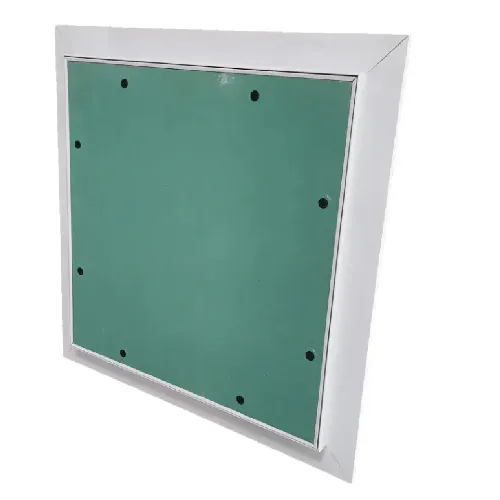- Afrikaans
- Albanian
- Amharic
- Arabic
- Armenian
- Azerbaijani
- Basque
- Belarusian
- Bengali
- Bosnian
- Bulgarian
- Catalan
- Cebuano
- Corsican
- Croatian
- Czech
- Danish
- Dutch
- English
- Esperanto
- Estonian
- French
- German
- Greek
- Hindi
- Indonesian
- irish
- Italian
- Japanese
- Korean
- Lao
- Malay
- Myanmar
- Norwegian
- Norwegian
- Polish
- Portuguese
- Romanian
- Russian
- Serbian
- Spanish
- Swedish
- Thai
- Turkish
- Ukrainian
- Uzbek
- Vietnamese
дек. . 05, 2024 02:41 Back to list
Mineral Fiber Ceiling Tiles for Acoustic Control and Aesthetic Appeal
The Versatility and Benefits of Mineral Fiber Tile Ceilings
When it comes to interior design and construction, the choice of ceiling materials can significantly impact the overall aesthetics and functionality of a space. Among the various options available, mineral fiber tile ceilings have gained popularity for their unique combination of performance, style, and cost-effectiveness. This article will delve into the characteristics, advantages, applications, and installation process of mineral fiber tile ceilings, establishing why they are a go-to choice for both residential and commercial spaces.
What are Mineral Fiber Tiles?
Mineral fiber tiles are primarily made from natural and synthetic minerals, including fiberglass, rock wool, and cellulose. This composition gives them several beneficial properties such as sound absorption, thermal insulation, and fire resistance, making them suitable for a wide range of environments. Typically, these tiles are lightweight and come in various sizes, styles, and finishes, allowing for versatility in design and implementation.
Benefits of Mineral Fiber Tile Ceilings
1. Sound Insulation One of the most significant advantages of mineral fiber tiles is their excellent sound-absorbing properties. They can reduce sound transmission between rooms, making them particularly beneficial in environments where noise control is crucial, such as offices, schools, and healthcare facilities. The tiles help create a more comfortable atmosphere by minimizing echo and background noise.
2. Fire Resistance Safety is a priority in any building, and mineral fiber ceiling tiles contribute significantly to this aspect. Many mineral fiber tiles are classified as Class A fire-rated materials, meaning they can resist flames and do not contribute to the spread of fire. This quality is especially important in public buildings, where compliance with safety standards is essential.
3. Thermal Insulation These tiles also offer thermal insulation benefits, helping to regulate indoor temperatures. By reducing heat loss in winter and keeping spaces cooler during summer, mineral fiber tiles can contribute to lower energy costs and increased comfort.
4. Moisture Resistance Certain mineral fiber tiles come with moisture-resistant properties, making them ideal for use in humid areas such as bathrooms, kitchens, and basements. This resistance helps prevent mold and mildew growth, ensuring a healthier indoor environment.
mineral fiber tile ceiling

5. Aesthetic Variety With an array of designs, patterns, and textures available, mineral fiber tiles can complement almost any interior décor. From modern offices to traditional homes, there are options to suit every taste, allowing designers and homeowners to create a visually appealing space.
Applications of Mineral Fiber Tile Ceilings
Due to their versatile characteristics, mineral fiber tile ceilings are widely used in various applications
- Commercial Buildings Office spaces, retail environments, and hotels often utilize mineral fiber tiles to enhance acoustic comfort while also maintaining aesthetic appeal. - Education Facilities Schools and universities benefit from the sound-absorbing qualities of these tiles, which create a conducive learning environment by minimizing noise interference. - Healthcare Systems Hospitals and clinics require strict adherence to safety and hygiene regulations. The fire-resistant and easy-to-clean nature of mineral fiber tiles makes them a preferred choice in these settings. - Residential Spaces Homeowners frequently opt for mineral fiber ceilings in basements, home theaters, or family rooms where sound control is desired.
Installation Process
Installing mineral fiber tile ceilings typically involves a straightforward process. Here’s a brief overview
1. Preparation The area should be cleared, and existing ceilings may need to be removed or modified. 2. Framework Assembly A grid system is installed, which serves as the framework for holding the tiles. This grid can be suspended from the existing ceiling or fixed directly to the structure. 3. Tile Installation The mineral fiber tiles are then fitted into the grid. They can be laid in various patterns to achieve the desired look. 4. Finishing Touches Once all tiles are in place, any necessary adjustments or finishing touches can be applied.
Conclusion
Mineral fiber tile ceilings offer an impressive combination of sound insulation, fire resistance, thermal efficiency, and aesthetic flexibility, making them an ideal choice for various applications. Whether in commercial or residential settings, these ceilings effectively enhance the quality of the indoor environment while maintaining safety and style. As the demand for effective building materials continues to grow, mineral fiber tiles stand out as a practical and attractive solution.
-
Transform Interiors with PVC Gypsum Ceiling: A Stylish, Durable, and Moisture-Resistant SolutionNewsMay.19,2025
-
The Smart Interior Upgrade: Discover the Durability and Versatility of Gypsum Ceiling Access Panel SolutionsNewsMay.19,2025
-
The Smart Choice for Interior Design: Discover the Value of PVC Gypsum Ceiling SolutionsNewsMay.19,2025
-
Mineral Fiber Ceiling Tiles: The Smart Blend of Performance and AestheticsNewsMay.19,2025
-
Mineral Fiber Ceiling Tiles: The Superior Choice Over Gypsum for Sound and Fire SafetyNewsMay.19,2025
-
Mineral Fiber Ceiling Tiles: Eco-Friendly Strength and Style for Every CeilingNewsMay.19,2025







